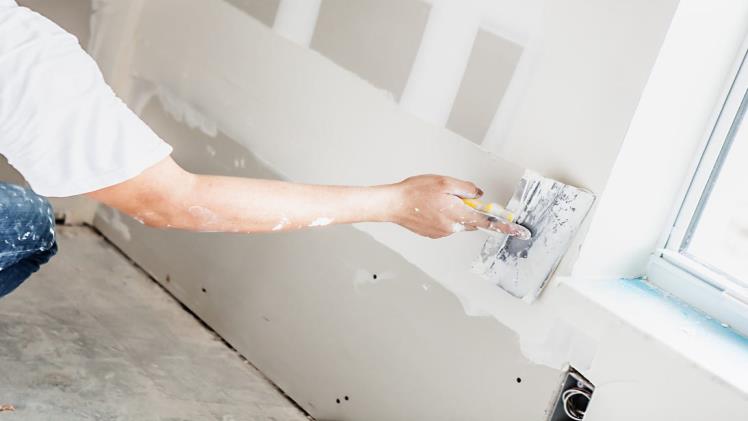Drywall or gypsum board is a valuable construction material like others. (Construction takeoffs can be availed to have information about the needed constituent materials in a project.) It is mainly used for the interior finishing materials for the ceiling and the walls. This is mainly due to its physical appeal as these boards are manufactured as smooth and attractive. In addition to that, these boards also provide protection for walls and ceilings in different manners. This is due to other manufactured qualities in these boards.
First, let us understand what are drywall or gypsum boards and their installation.
What is Drywall or Gypsum Board?
Simply put, these boards are gypsum plaster placed like a sandwich between paper. In the same manner, fiberglass mats can be used in place of paper. The plaster is mixed with foaming agents, fine gypsum crystals, plasticizers, and similar materials. This sandwich is pressed and then cooled. Finally, these boards are made and cut in different dimensions i.e., sizes and thicknesses. Moreover, they are classified as per their different constituents.
Their Installation
Drywall or gypsum boards are fastened through materials such as bolts and anchors. Other than them, different other fittings are used along with them to fasten it to the concerned spots. These include a long list of materials and tools. Their installation requires a steady hand but does not need many skills. A little experience can make one enough to install them skillfully.
They primarily cover walls and ceilings in the interiors still they can be used for other minor uses as well. For all of these uses, these boards offer certain outcomes such as protection.
Protection They Offer
Among the reasons behind installing these boards include protection. These provide protection in different manners including:
Image Damage
They cover areas on walls and ceilings but that is not it. They are also covering the ugly look behind it. If anyone gets to look at the wall or ceiling behind it, they might not like staying at such a place. While their outward appearance is worth looking at, they make the interiors pleasing to look at and the environment livable.
Sound Penetration
Sound from the outside is meant to stay outside. If it penetrates indoors, it disturbs the internal environment and its inhabitants. In this case, drywall proves really helpful. It protects the indoors by insulating them from the outside sound and keeping indoors safe and calm.
Heat Leakage
Like sound, heat is an important factor in the indoor environment. It is regulated in a certain condition and if that condition is disturbed the life inside is harmed. Drywall in this case as well as in others protects the internal heat condition by keeping it inside.
Fire Spread
Fire can erupt as a result of any accident and cause havoc indoors. In any such condition, the best is to contain the fire. Gypsum and plaster used in them repel fire and this makes them fire insulant. Thus, if they are installed there is a high chance that fire will not spread.
Architectural Damage
Walls and ceilings are prone to impact of force and sharp objects. Hence, they sustain damage as a result of any such condition. Even in this, these boards work wonders. After cooling, these board becomes strong. This way, it protects against force or sharp objects as added endurance of wall and ceiling.
Conclusion
Drywall is a wonderful construction material. It is mainly known and used for its finishing quality. But in addition to that, it also provides protection in different manners. These can be in terms of image, sound, heat, fire, and architectural damage. To get their acute effect, contractors and others need the right information. For this, they can have drywall takeoffs.

